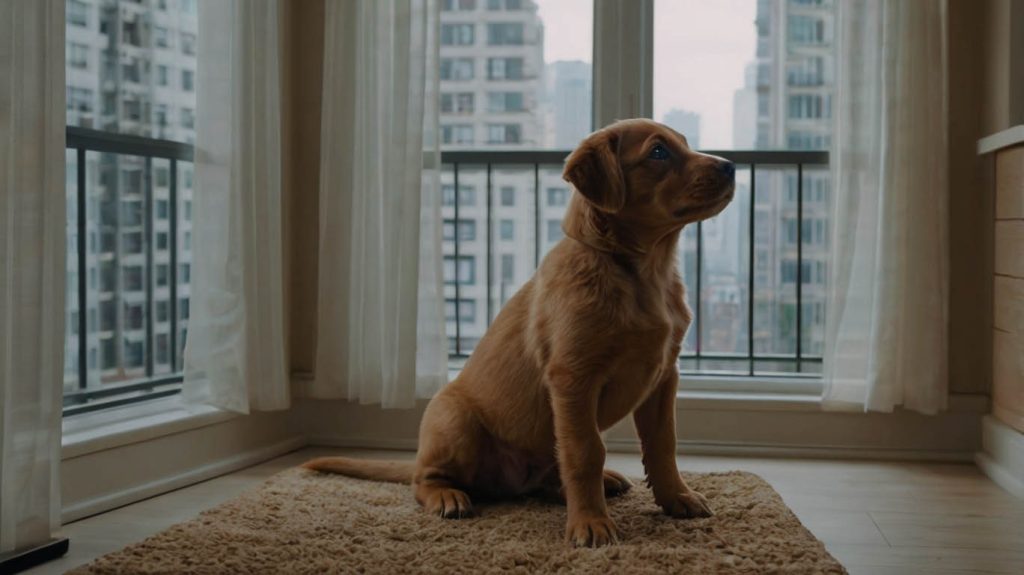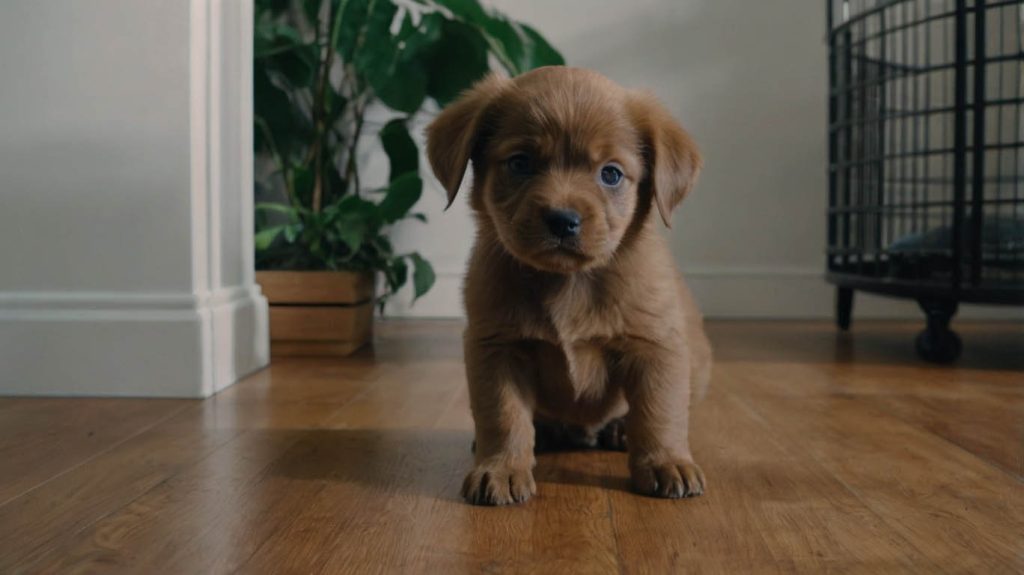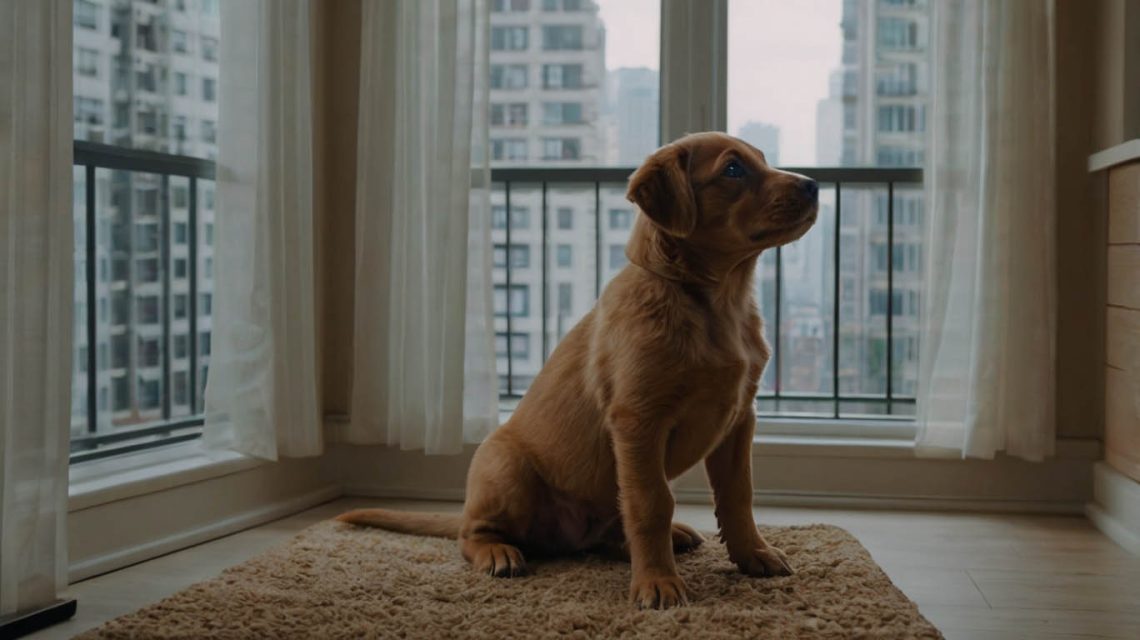How to Potty Train a Puppy in an Apartment: The Ultimate Guide
The joy of bringing home her new Corgi puppy, Leo, was quickly replaced by a wave of panic for Alex. Living on the 5th floor, she watched in horror as Leo squatted on her favorite rug. She scooped him up, fumbled for her keys, and began the frantic, seemingly endless journey down the hall, into the elevator, and through the lobby, all while Leo’s tiny bladder gave way. By the time they reached the grass outside, the accident was long over. Alex felt defeated, thinking, “This is impossible. How to potty train a puppy in an apartment?”
Alex’s story is a familiar one for city-dwelling dog lovers. The unique challenges of apartment life—the lack of a backyard, the long trips outside, the shared spaces—can make potty training feel like an insurmountable task.
Consequently, this definitive guide is here to be your lifeline. We will provide a step-by-step, comprehensive plan that addresses the specific hurdles of apartment living. This is not just a list of tips; it is a proven strategy. Therefore, you can move from a state of frustration to one of confident, successful puppy parenting.
The Foundation: Your Apartment Potty Training Toolkit
Before you begin, success depends on having the right tools. Rushing to the store after the first accident is a recipe for stress. Prepare your apartment with these essentials.
- A Crate: This is your most valuable tool. A properly-sized crate serves as your puppy’s safe “den” and is instrumental in preventing accidents when you can’t supervise them.
- Enzymatic Cleaner: Standard cleaners won’t cut it. You need an enzymatic cleaner specifically designed to break down pet urine proteins. If you don’t eliminate the scent completely, your puppy will be drawn back to the same spot to pee again.
- An Indoor Potty Spot (Optional but Recommended): This could be puppy pads, a disposable grass patch, or a reusable turf system. For apartment dwellers, this is a lifesaver for middle-of-the-night emergencies.
- High-Value Treats: Small, delicious treats reserved only for successful potty breaks. These are your primary tool for positive reinforcement.
- A Leash and Harness: Ready to go by the door at all times for those frequent trips outside.

The Core Strategy: How to Potty Train a Puppy in an Apartment
Success in apartment potty training boils down to three key pillars: a strict schedule, constant management, and positive reinforcement.
Step 1: Establish a Rock-Solid, Frequent Potty Schedule
A puppy’s bladder is tiny. They cannot “hold it” for long. Your job is to take them out so frequently that they don’t have a chance to have an accident inside. Your schedule should include taking your puppy out:
- Immediately upon waking up: First thing in the morning and after every nap.
- Last thing before bed: The very last thing you do at night.
- 15-20 minutes after every meal: Eating stimulates their digestive system.
- After every play or training session: Excitement can lead to a full bladder.
- At least once every 1-2 hours: When in doubt, take them out.
Yes, this is frequent. However, this proactive approach is the secret to how to potty train a puppy in an apartment successfully.
Step 2: Master Crate Training for Accident Prevention
When you cannot have your eyes directly on your puppy, the crate is your best friend. Dogs have a natural instinct not to soil their den.
- Make the Crate a Happy Place: Introduce the crate with treats, toys, and praise. Never use it as a punishment.
- Use it for Short Periods: Use the crate for naps or when you need to shower or cook. This prevents your puppy from wandering off and having a secret accident behind the sofa.
- Immediate Potty Break: The moment you let your puppy out of the crate, carry them directly to their designated potty spot (inside or out).
Step 3: Choose and Train an Indoor Potty Spot
This is the apartment dweller’s secret weapon. A long elevator ride is often too much for a young puppy. An indoor spot provides a safe, approved place for them to go, especially overnight or when you’re on a work call.
- Puppy Pads vs. Grass Patches: Puppy pads are cheap and easy but can sometimes confuse a puppy into thinking any soft mat is okay to pee on. A real or artificial grass patch more closely mimics the outdoors, which can make the eventual transition easier.
- Location is Key: Place the indoor spot in a consistent, easy-to-clean area, like a bathroom or a corner of the laundry room. This will be your emergency go-to when figuring out how to potty train a puppy in an apartment.
Step 4: Perfect the Potty Break Routine
Every trip to the potty spot, whether indoors or outdoors, should follow the same routine to build a strong habit.
- Use a Verbal Cue: As you take your puppy to the spot, use a consistent verbal cue like “Go potty!” or “Do your business!”
- Reward Lavishly: The instant your puppy finishes peeing or pooping in the correct spot, praise them enthusiastically (“Yes! Good potty!”) and give them a high-value treat immediately. This creates a powerful positive association.
- No Playtime Until Business is Done: When you go outside, it’s for potty first. Once they have successfully gone, then you can have a short walk or play session as an extra reward.

Handling Accidents: What to Do When They Inevitably Happen
Accidents will happen. Your reaction is what determines whether it’s a small setback or a major roadblock in your training.
The “Do Not” List: How to Avoid Making Things Worse
- Do NOT Punish Your Puppy: Never yell, scold, or rub your puppy’s nose in their accident. This will only teach them to fear you and to hide when they need to go, making training much harder.
- Do NOT Use Ammonia-Based Cleaners: Urine contains ammonia. Using a cleaner with ammonia can actually reinforce the scent and attract your puppy back to the same spot.
The “Do” List: Your Accident Clean-Up Protocol
- Interrupt if You Catch Them in the Act: If you see them start to squat, make a sharp but not scary noise (like a clap) to interrupt them. Immediately scoop them up and take them to their designated potty spot.
- Clean Thoroughly with an Enzymatic Cleaner: This is the most crucial part. After soaking up the mess, saturate the area with a high-quality enzymatic cleaner. You must follow the product’s directions, which often involve letting it sit for a period to allow the enzymes to work. This is the only way to truly eliminate the odor molecules.
A Case Study Resolved: How Alex and Leo Found Success
Let’s return to Alex and her Corgi, Leo. Feeling defeated, she committed to a new plan. She created a strict hourly schedule and set alarms on her phone. She made Leo’s crate a “puppy paradise” with his favorite blanket and toys. Most importantly, she set up a small grass patch on her balcony for those middle-of-the-night emergencies.
The first week was intense, but she stuck to the routine. She celebrated every successful potty break on the grass patch or outside with a “potty party” of treats and praise. When an accident happened, she cleaned it silently and thoroughly with her enzymatic cleaner. Within two weeks, the accidents had nearly stopped completely. Alex had learned how to potty train a puppy in an apartment by being more proactive and consistent than the puppy’s bladder was strong.
The Final Verdict: Consistency is Key in Apartment Potty Training
Potty training a puppy in an apartment is absolutely achievable. It requires more planning and diligence than it might in a house with a backyard, but the principles are the same: consistency, management, and positive reinforcement. Your success hinges on your ability to create and stick to a rigid schedule.
You can do this! Your hard work in the first few weeks will pay off with a lifetime of a well-behaved, accident-free companion. What has been your biggest challenge with apartment potty training? Share your stories and questions in the comments below!


